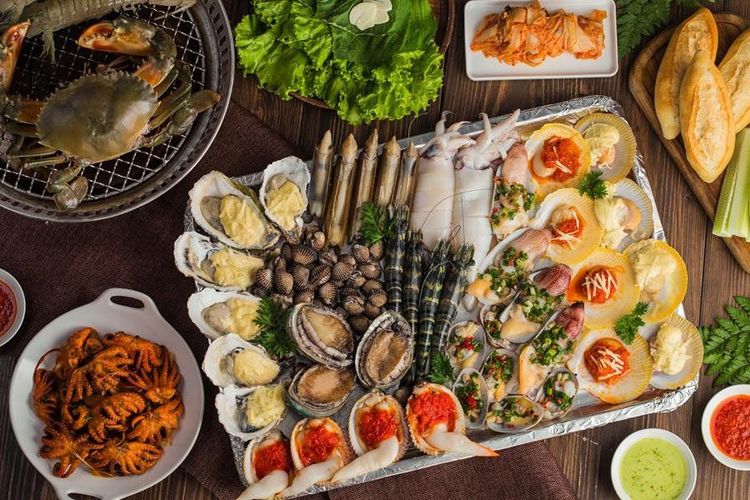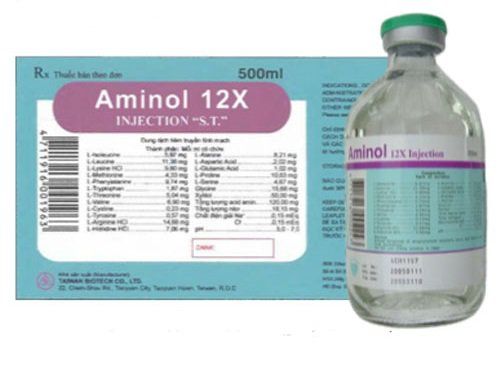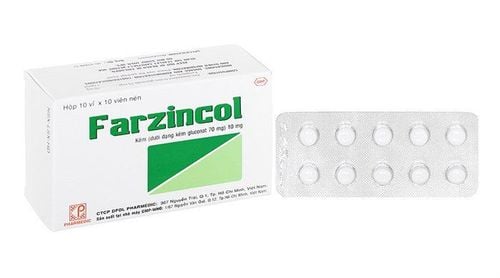This is an automatically translated article.
Eating fresh seafood is a simple method to supplement protein for the body in an abundant and quality way. According to many nutritionists, each person should maintain eating seafood at least 2 times per week.1. Is seafood rich in protein?
The answer is yes. Seafood provides humans with a protein source equivalent to 20% of normal human protein and much more effective than other animals.For example, 1 fish when eating 100kg of food can produce about 61kg of edible meat. This amount of meat is much higher than that of other animals (cow only produces about 4 – 10kg of meat, pigs make 17kg and chickens are 21kg of meat).
Therefore, seafood is currently an undeniably abundant source of protein and gives people many benefits of protein for the body such as:
Optimizing immune function. Regulate the activity of enzymes and hormones. Lose body fat...

Hải sản cung cấp cho con người nguồn protein tương đương 20% protein bình thường của con người và hiệu quả hơn hẳn so với các loại động vật khác
2. 10 tips for a quality seafood meal – fresh and delicious
According to the 2010 US Dietary Guidelines, some of the following tips can help make seafood meals more palatable and appealing, while maximizing nutrients.2.1 Eat a variety of seafood You should find ways to diversify your family's meals with a variety of seafood, especially seafood with high omega-3 content such as salmon, mackerel, herring, etc. sardines or oysters...
2.2 Keep lean and can add flavor You can grill or roast seafood to make it richer and more appealing. However, seafood processing should limit activities with added fat such as deep-frying, frying... because this will increase calories and unhealthy fats. Alternatively, you can use spices or herbs, such as cumin, chili powder, paprika, or cumin, and lemon or lime juice, which can enhance the flavor without adding salt. .
2.3 Seafood also includes crustaceans Some types of shellfish such as oysters, mussels, squid, shrimp... can also provide a rich source of omega-3, good for health. So you can add these to your meal to make it more rich. Quite popular dishes in this group are steamed clams, grilled oysters,...

Một số loại động vật có vỏ như hàu, trai, mực, tôm... cũng có thể cung cấp nguồn omega – 3 dồi dào, tốt cho sức khỏe
However, choosing canned foods should only be done when fresh seafood is not available or you are too busy to prepare them.
2.5 Cook and store seafood properly You need to have some attention in cooking and storing seafood:
It is recommended to keep seafood in the refrigerator in the freezer compartment (temperature below 4 degrees Celsius) until Processing. Wash your hands and utensils before and after handling any food, especially seafood. Thoroughly cook seafood to temperatures above 60 degrees Celsius for at least 15 seconds. For shellfish such as mussels, oysters, etc., you should try touching them first. If their shells do not close to the touch, this means they are not fresh and unsafe for health. On the contrary, if after cooking, the shells of these foods do not open, you should not eat them.
2.6 Don't just cook a boring dish Fish fillet seems to be a common ingredient in most seafood meals, however, you can still be more creative than that. You can try other ways to cook it such as fish cakes, sautéed without oil, cakes with grilled fish or clam pasta...
2.7 Combine seafood with salads or sandwiches You can try grilled scallops , shrimp or crab... and eat with salad (instead of using steak, chicken... like traditional salads). In addition, some canned seafood products such as tuna, canned salmon, etc., when sandwiched, are also delicious without cold meat - a food with too much sodium, which is harmful to health.

Bạn có thể thử chế biến sò điệp nướng, tôm hay cua... và ăn cùng với salad
In addition, you can also check and regularly update the discounts, promotions... of supermarkets, big stores, so you can save money on buying seafood.
2.9 Children need seafood to grow up healthy and smart Omega-3 fats from seafood may improve nervous system development in infants and children. Therefore, if children eat seafood regularly and in moderation, they will develop better mentally and physically.
Besides, pregnant or lactating women should also eat a lot of seafood, which is not only good for the mother but also good for the baby's development.
2.10 The serving of seafood should be clearly defined. Nutritionists recommend, each week, the body needs to add about 8 ounces of seafood (equivalent to 226 grams). Therefore, to ensure that you can supplement correctly and sufficiently, you need to clearly determine the volume of each food. For example, a can of tuna contains about 3 - 4 ounces of tuna (equivalent to 85 grams - 115 grams), a salmon fillet has about 4-6 ounces (equivalent to 115 - 170 grams), and one fish Small anise has a weight of about 85 grams...
Eating seafood can bring many health benefits, not only providing a rich source of protein but also healthy omega-3 fats.
Please dial HOTLINE for more information or register for an appointment HERE. Download MyVinmec app to make appointments faster and to manage your bookings easily.
References: choosemyplate.gov, seafoodhealthfacts.org, grenade.com












